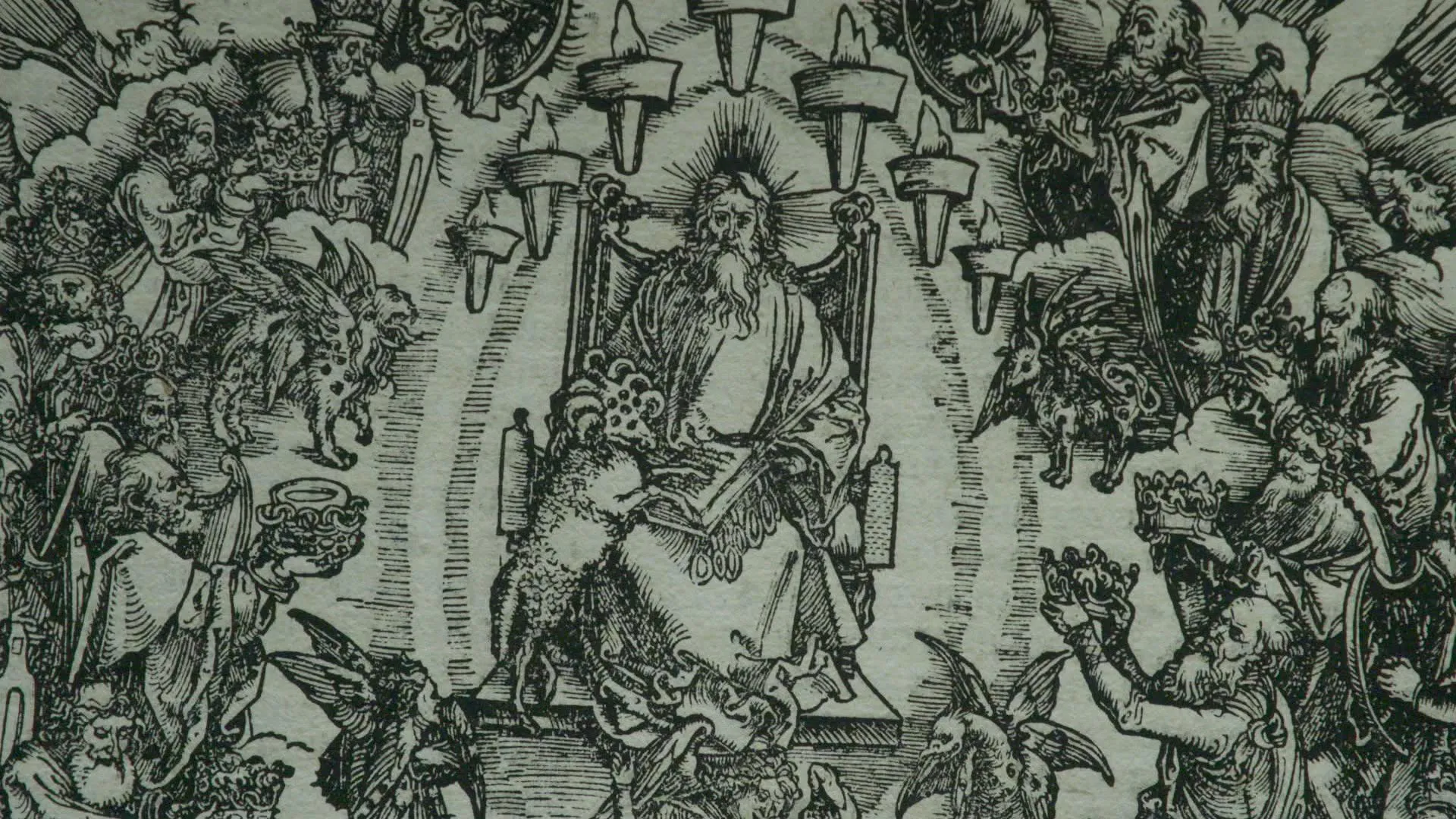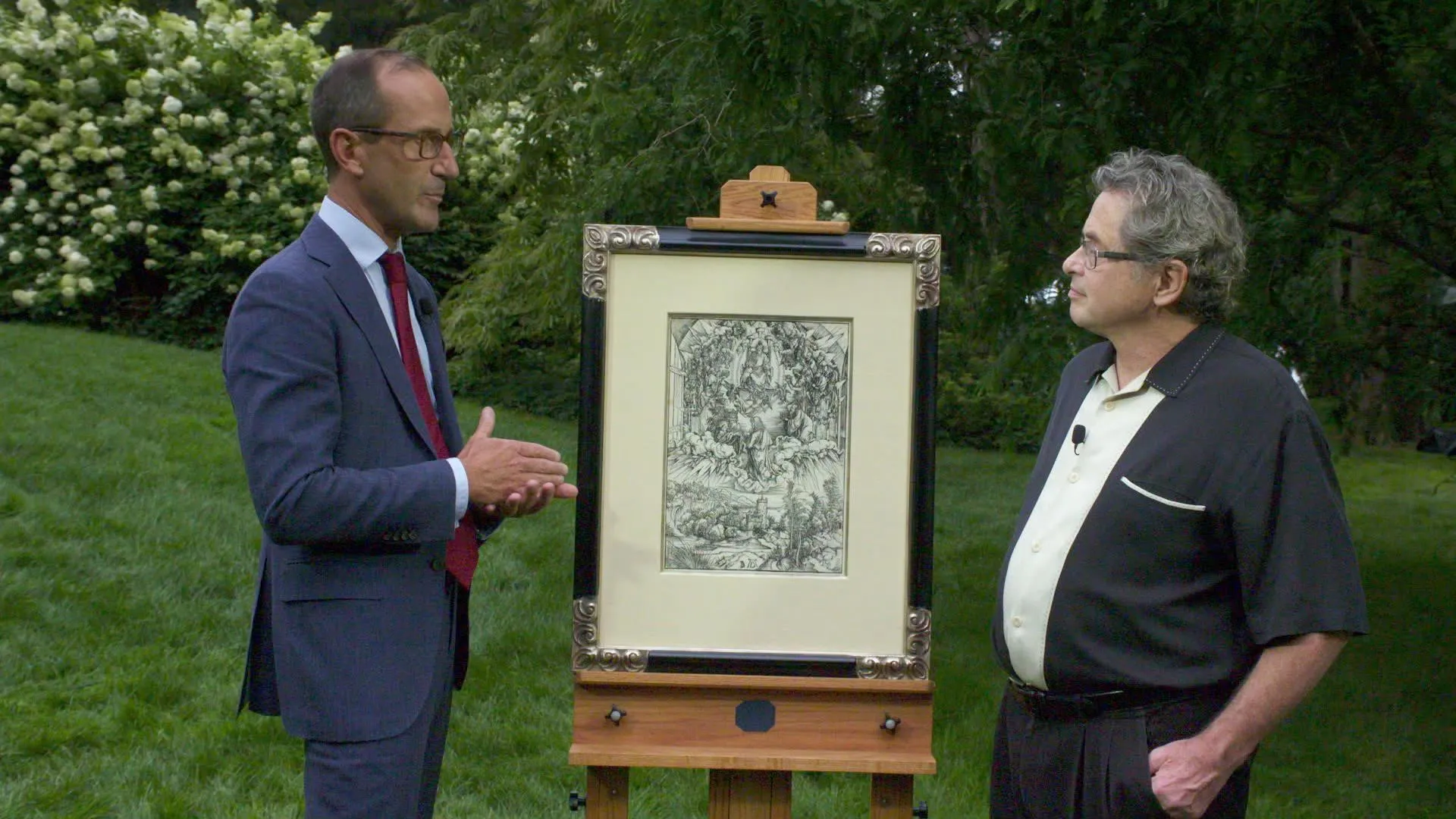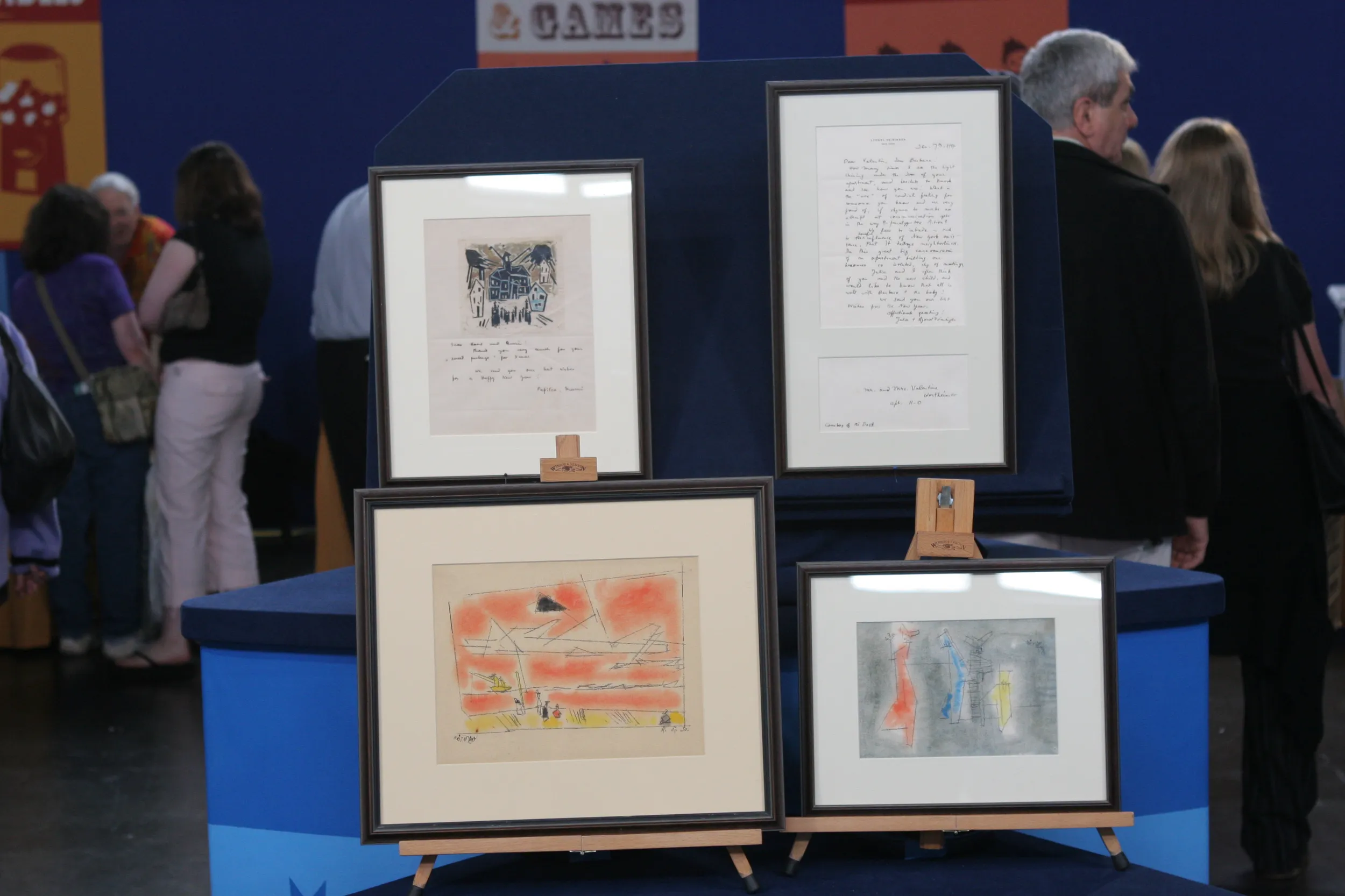GUEST: I met an old fellow about 30 years ago. He said he was selling all his worldly goods and wanted to build a school for the deaf in Mexico. I put it in a new frame, and it's been on the wall ever since. I recognize the "A.D." as being Albrecht Dürer.
APPRAISER: Okay.
GUEST: But whether it's a picture of a Dürer or a real Dürer...
APPRAISER: Right.
GUEST: I paid $400 for it.
APPRAISER: And when was this?
GUEST: 30 years ago?
APPRAISER: You're absolutely right. This is by an artist named Albrecht Dürer, who worked in Southern Germany and is really the most famous of the early Renaissance printmakers. Dürer was born in 1471 in Nuremberg, worked there his whole life. He died in 1528. He was a child prodigy. Uh his father was an artisan, a craftsman, metalsmith, and we know from self-portraits that Dürer made when he was a young teenager that are incredibly realistic...
GUEST: Oh, my goodness.
APPRAISER: ...how talented he was at 13 years old. He made approximately 300 different woodcuts, which is what you have here, a woodcut...
GUEST: Oh, okay.
APPRAISER: ...and more than 100 engravings and etchings. He was also a painter, but he gravitated to printmaking...
GUEST: Mm-hmm.
APPRAISER: ...as a means to disseminate his work further throughout Europe, and became extremely famous in his own day. This is one of 15 different woodcut subjects he made to illustrate what's known as the Apocalypse. There's also a 16th woodcut title page that goes with this, and it's illustrating the Revelations from the Bible, written by St. John.
GUEST: Oh.
APPRAISER: The title of this work is "St. John Appearing Before God the Father." Dürer made this woodcut in the "Apocalypse" series in the mid-1400s, and first published this in 1498, and it is known as the first artist's book.
GUEST: Wow.
APPRAISER: It's a book that's both designed by and published by an artist. In 1498, he issued it in two editions, in a Latin-text edition and German, which was very unusual to put something in the common, spoken language. And then, there was such demand for it that it was reissued in a Latin version in 1511.
GUEST: Ah.
APPRAISER: And that's what you have. Yours is in an amazing state of preservation. You're at 500-plus years for a sheet of paper...
GUEST: Wow.
APPRAISER: ...and it's, it's phenomenal, the way it's, it's preserved.
GUEST: So I got my $400 worth.
APPRAISER: I was just about to say, I think you got a pretty good deal for $400. (both laugh) I think it would be easily set at a replacement value for this at $30,000.
GUEST: Whoa! Oh, my goodness! Well, I'm glad I put a nice frame on it. (laughs) Really? That's amazing. That's, that's certainly good news, but it's going to stay on my wall. (both chuckle)










